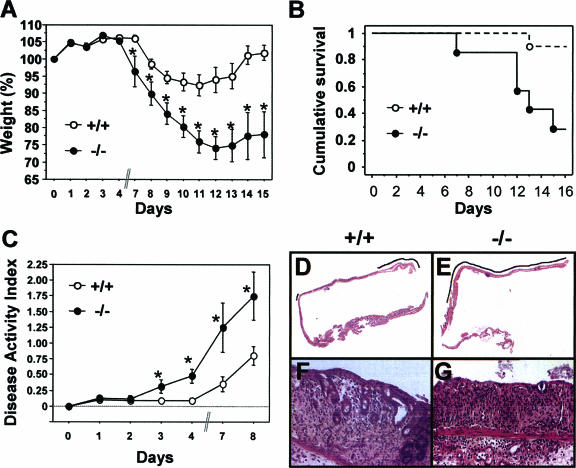FIG. 3.
The absence of Trp53inp1 increases the severity of colitis in mice. Cohorts of 7- to 10-week-old mice (n > 12 per group) were given 3.5% DSS in their drinking water for 7 days to induce acute colitis and then given tap water without DSS while being monitored for 15 days. (A) The mice were weighed every day, and the values were expressed as percentages of the initial weights. Mice deficient in Trp53inp1 lost more weight and showed poorer recovery than WT mice. (B) Kaplan-Meier analysis showed a higher mortality rate after induction of colitis in the Trp53inp1-deficient mice than in the WT mice (P = 0.029). (C) The DAI increased more rapidly, and to higher values, in Trp53inp1-deficient mice than in WT mice. The data shown in panels A, B, and C are representative of two independent experiments. For panels A and C, an asterisk indicates a P value of <0.05 for Trp53inp1-deficient mice (−/−) versus that for WT mice (+/+). (D and E) Microscopic examination of colon sections at 9 days after the induction of colitis shows more-extensive ulceration (indicated by the black line) in Trp53inp1-deficient animals (right) than in the WT (left). (F and G) Histological analysis at higher magnification (×200) shows moderate epithelium damage in WT mice, with a progressive disappearance of glands (left). The damage is more severe in Trp53inp1-deficient animals, where only the surface epithelium persists (G).

